Over the years, I’ve had the opportunity to share my work through exhibitions, both as a solo artist and within a group.
See also Talks, Workshops and Publications.
When the Department of Mathematics and Statistics of Dalhousie University in Halifax, Nova Scotia, refurbished their Student Resource Room, a space for students to work and consult tutors, they asked me to design a series of art pieces for permanent exhibition in the space. The series of prints is on display since 2009.
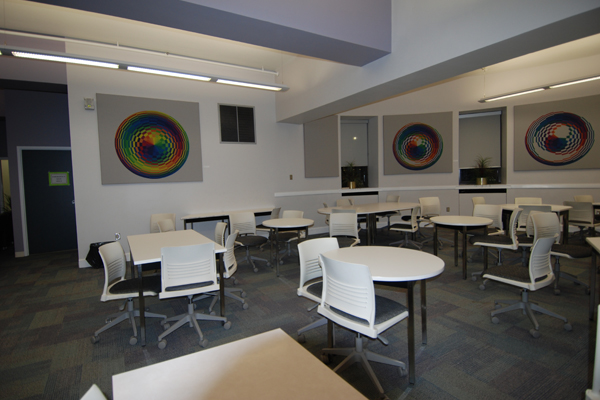
Mount Saint Vincent University has an assigned space, Seton 426, for its doctoral students, which they also share with several members of staff and faculty. Since 2015, the space is also home to a collection of my mathematically-inspired work.
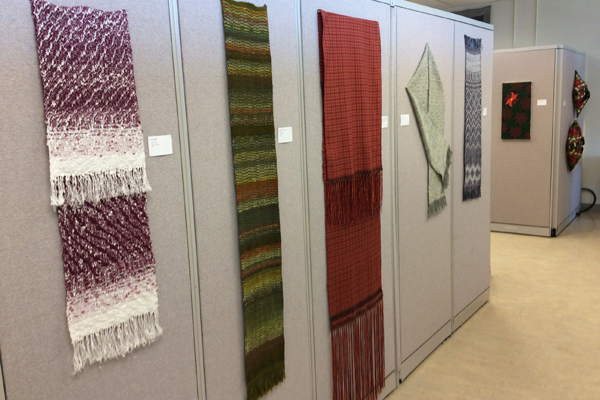
In the summer of 2014, the Canadian Mathematics Society held their Summer Meeting at Dalhousie University, in Halifax, NS. As part of the conference, I held a solo show of mathematically-inspired art.
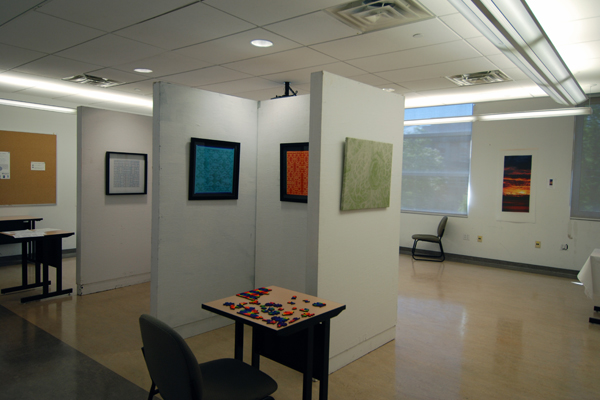
In 2012 I had a 1-month solo show of photographs that had been manipulated using a variation on the multiplication and division tables, before being printed onto silk. The exhibition was described as follows:
With the accessibility of computer graphics and digital photography, the sciences of colour theory, image processing and printing technology have become ever more relevant to visual arts training. In particular, the generation of optically mixed colours as used in pointillism and in screen printing and Jacquard weaving form the theoretical basis of the various processes that translate digital images into print.
In current digital image printing, the quality of the print is determined by a variety of factors, not the least of which are the density of information per square inch in the digital image, and the distance of the viewer to the image. The interesting feature of this technology is that the processes involve layered patterns of various colours. Some of my work in Concrete Art focuses precisely on colour patterns of measurable density.
Connecting that exploration with my photographic work, my work in colour theory and colour perception, and a recent interest in weaving, has resulted in a series of pieces that play with the visual interpretation of photographic images and their re-interpretation through the use of the density patterns.
In the Concrete Art Manifesto, the artists explain that figurative visual art is always an abstraction in that the subject is re-interpreted on the canvas or in the carved stone. In effect, physiologically, vision is always an abstraction, from the light reflected off the subject through the cornea and the lens to the retina, with its variously photosensitive cells, to the electro-chemical signals in the brain, to the mental interpretation.
The interplay between the two media of photography and variable raster density continue the theme developed in my photography, of the serendipitous glimpses, by increasing interest in an otherwise prosaic subject matter. They also in-corporate my explorations of colour and number patterns in that they involve my findings in the Colourwave strand.
Digital images are recorded using a variety of colour models, that impact the range of resulting colours. In some of the images shown, the colour range is as wide as in the original subject. In others, the coloured patterns add up to a much narrower range of colour, creating a duotone or tritone effect not dissimilar from old Sepia photographs.
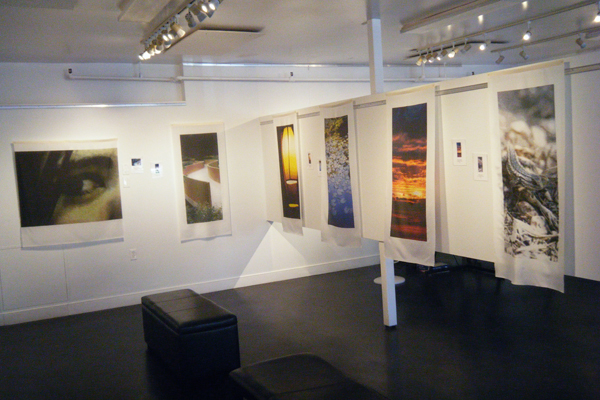
Mount Saint Vincent University students, staff, faculty, alumnae and their families are invited to display their creative work in this annual extravaganza. Entries include visual art, music, performance, poetry, craft, literature, basketry, beading and more!
I participated in the annual shows during 2005-2011, 2013-2016.
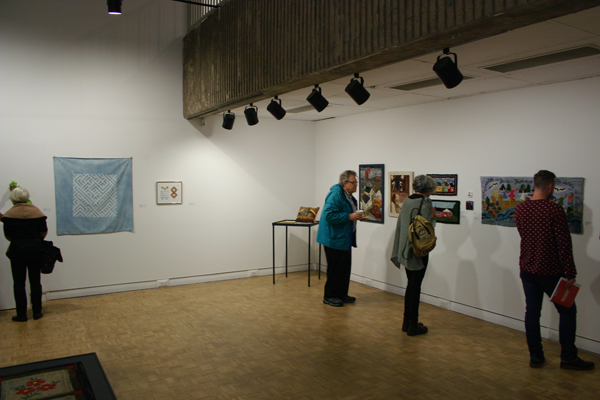
About every two or three years, the Atlantic Spinners and Handweavers have an exhibition of members'work. at the Nova Scotia Archives, in Halifax, NS. I've participated in the last two instances, including the one displayed here, in 2015, and in 2013 and 2018.
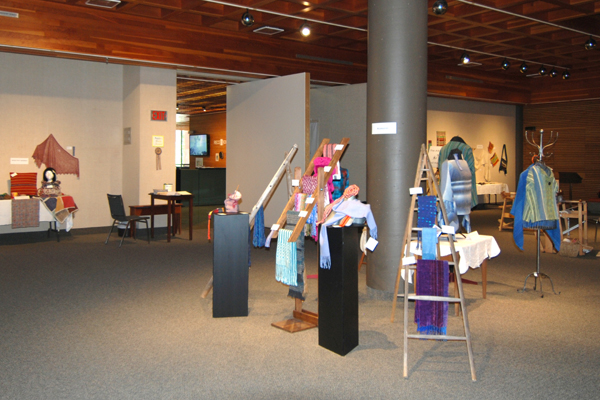
In parallel with the annual Bridges conference, a group exhibition is shown at a venue connected to the conference. Here, the show in the Institute of Education, London Knowledge Lab, London, UK, August 2006. I also participated in 2017.

A juried show of mathematical artwork held during the Joint Math Meeting organised by the AMS and MAA in Baltimore, MD, in Winter 2014.
2012Organised by the Mount Saint Vincent University Research Office, a showcase of faculty research, including arts-based research.
A group show of new members at ViewPoint Gallery, a photography co-op gallery in Halifax, Nova Scotia.
As part of an exhibition on the work of M.C. Escher, at Arte Canal, Madrid, the content of a CD accompanying an edited volume on his legacy was on display, December 2006 to March 2007.
The final show at Kunsthaus Örlikon, Zürich, Switzerland, summer 1994.